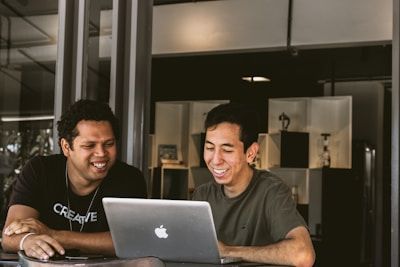Why engagement isn’t the issue (and what to focus on instead!)
We explore why employee engagement is still falling – and what EX professionals can do differently to turn things around.

Katie Austin
Minutes
25th April 2025
Employee Experience
Employee Engagement
EX Design
Employee Engagement
EX Design
Another year, another drop in global employee engagement. Gallup’s 2025 State of the Global Workplace report has revealed that only 21% of employees are engaged at work — down from 23% the year before.
It’s prompted a wave of concern (again), but here’s the real question:
It’s prompted a wave of concern (again), but here’s the real question:
Why are we still surprised?
After two decades of trying to improve engagement, we’re still approaching it as a standalone metric — something to ‘fix’ — rather than recognising it for what it actually is: an outcome of the broader experience people have at work.
To borrow a metaphor we use often: expecting engagement scores to rise without changing the experience is like stepping on the scales and blaming them for the results. Engagement isn’t the input — it’s the output. It reflects how people feel about the environment they work in, the relationships they have, the meaning they find in their work, and the systems that support (or block) them.
The mistake isn’t wanting engagement — it’s thinking we can measure our way there.
After two decades of trying to improve engagement, we’re still approaching it as a standalone metric — something to ‘fix’ — rather than recognising it for what it actually is: an outcome of the broader experience people have at work.
To borrow a metaphor we use often: expecting engagement scores to rise without changing the experience is like stepping on the scales and blaming them for the results. Engagement isn’t the input — it’s the output. It reflects how people feel about the environment they work in, the relationships they have, the meaning they find in their work, and the systems that support (or block) them.
The mistake isn’t wanting engagement — it’s thinking we can measure our way there.
Engagement is a byproduct of experience
Let’s not lose sight of why engagement matters. When people feel engaged at work, they’re more productive, more fulfilled, and more likely to stay. Gallup’s research backs this up — linking engagement to everything from wellbeing to performance.
But despite the strong business case, organisations have historically focused on the tracking of engagement rather than the design of it. We’ve spent billions on surveys and dashboards — and a fraction of that on improving the everyday experiences that underpin engagement.The result? Insight-rich, action-poor strategies that leave both people and organisations stuck.
But despite the strong business case, organisations have historically focused on the tracking of engagement rather than the design of it. We’ve spent billions on surveys and dashboards — and a fraction of that on improving the everyday experiences that underpin engagement.The result? Insight-rich, action-poor strategies that leave both people and organisations stuck.
Designing engagement, not just measuring it
If we’re serious about moving the needle on engagement, we need to treat EX (Employee Experience) as a discipline — not a trend.
That means shifting our attention from measurement tools to the systems, moments and environments that shape how work feels. From onboarding and performance conversations to recognition and collaboration — every interaction is a chance to build trust, connection, clarity and purpose.
To do that well, we need tools and methods that go deeper than surveys:
✔️ Design thinking
✔️ Journey mapping
✔️ Service design
✔️ Co-creation with employees
These approaches are no longer just for customer experience teams. They’re essential for HR, people, and EX professionals who want to make real change — and design workplaces people want to be part of.
That means shifting our attention from measurement tools to the systems, moments and environments that shape how work feels. From onboarding and performance conversations to recognition and collaboration — every interaction is a chance to build trust, connection, clarity and purpose.
To do that well, we need tools and methods that go deeper than surveys:
✔️ Design thinking
✔️ Journey mapping
✔️ Service design
✔️ Co-creation with employees
These approaches are no longer just for customer experience teams. They’re essential for HR, people, and EX professionals who want to make real change — and design workplaces people want to be part of.
So where do we start?
Instead of asking “why hasn’t engagement improved?”, let’s reframe:
🔹 What are we doing to make work worth engaging with?
🔹 How are we designing experiences that enable people to thrive?
🔹 Are we creating the conditions for trust, contribution and connection?
When we focus on designing better experiences, engagement isn’t far behind — it becomes a natural result of people feeling seen, supported and set up to succeed.
🔹 What are we doing to make work worth engaging with?
🔹 How are we designing experiences that enable people to thrive?
🔹 Are we creating the conditions for trust, contribution and connection?
When we focus on designing better experiences, engagement isn’t far behind — it becomes a natural result of people feeling seen, supported and set up to succeed.
Looking to lead this shift in your own organisation? You’re in the right place.
As an EX Space member, you'll have access to the tools, templates, and on-demand learning you need to start designing more meaningful experiences — from journey mapping guides to masterclasses in EX strategy and design. You don’t have to wait for permission. You can start shaping change today. Not a member yet? Join essentials for free today, or sign up to our pro membership for access to all masterclasses, tools, templates, powerpacks and exclusive content.
But if you’d like a partner to help you go further — whether that’s shaping your strategy, building internal capability, or facilitating hands-on design — then our sister company People Lab are on hand to support. Get in touch to explore the best option for you.
But if you’d like a partner to help you go further — whether that’s shaping your strategy, building internal capability, or facilitating hands-on design — then our sister company People Lab are on hand to support. Get in touch to explore the best option for you.

